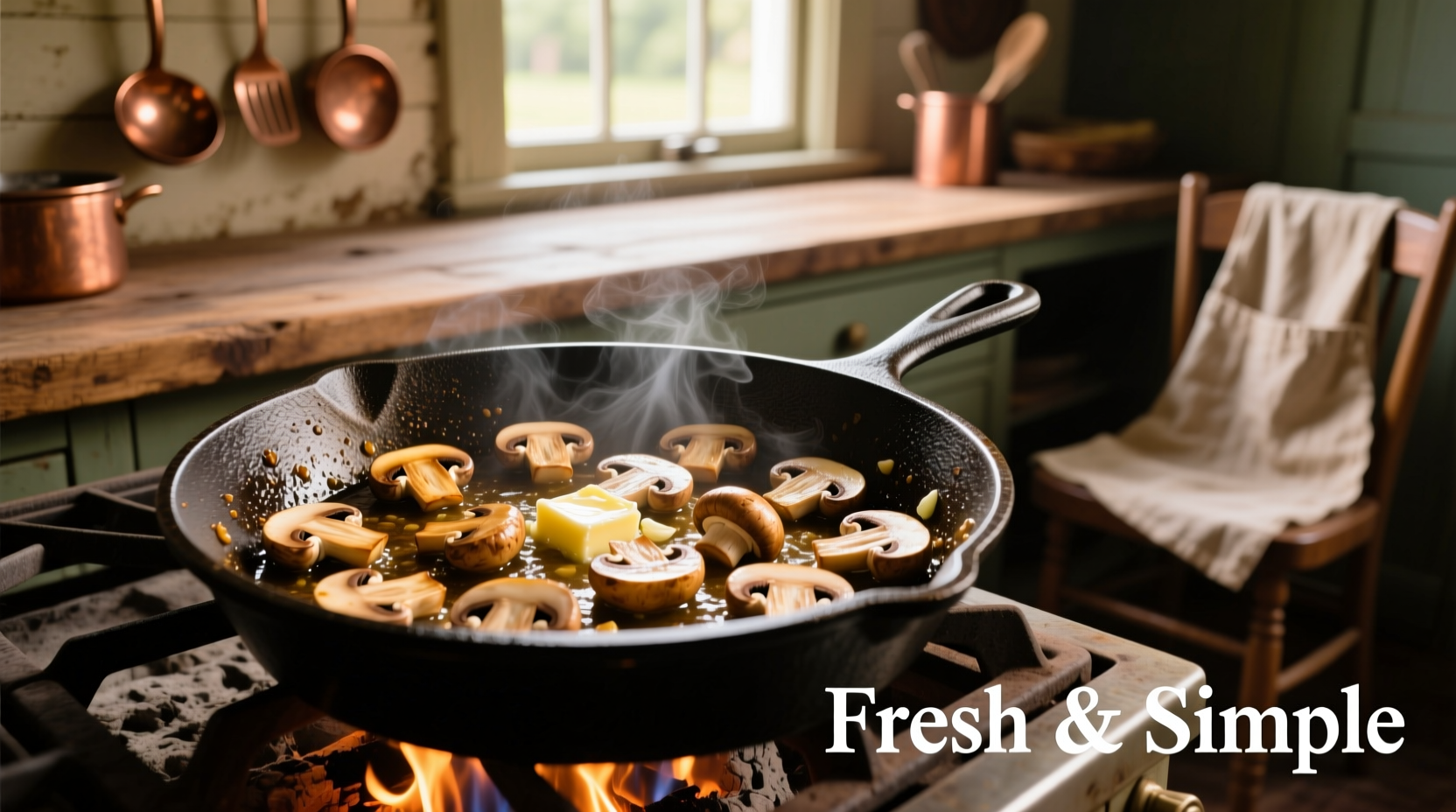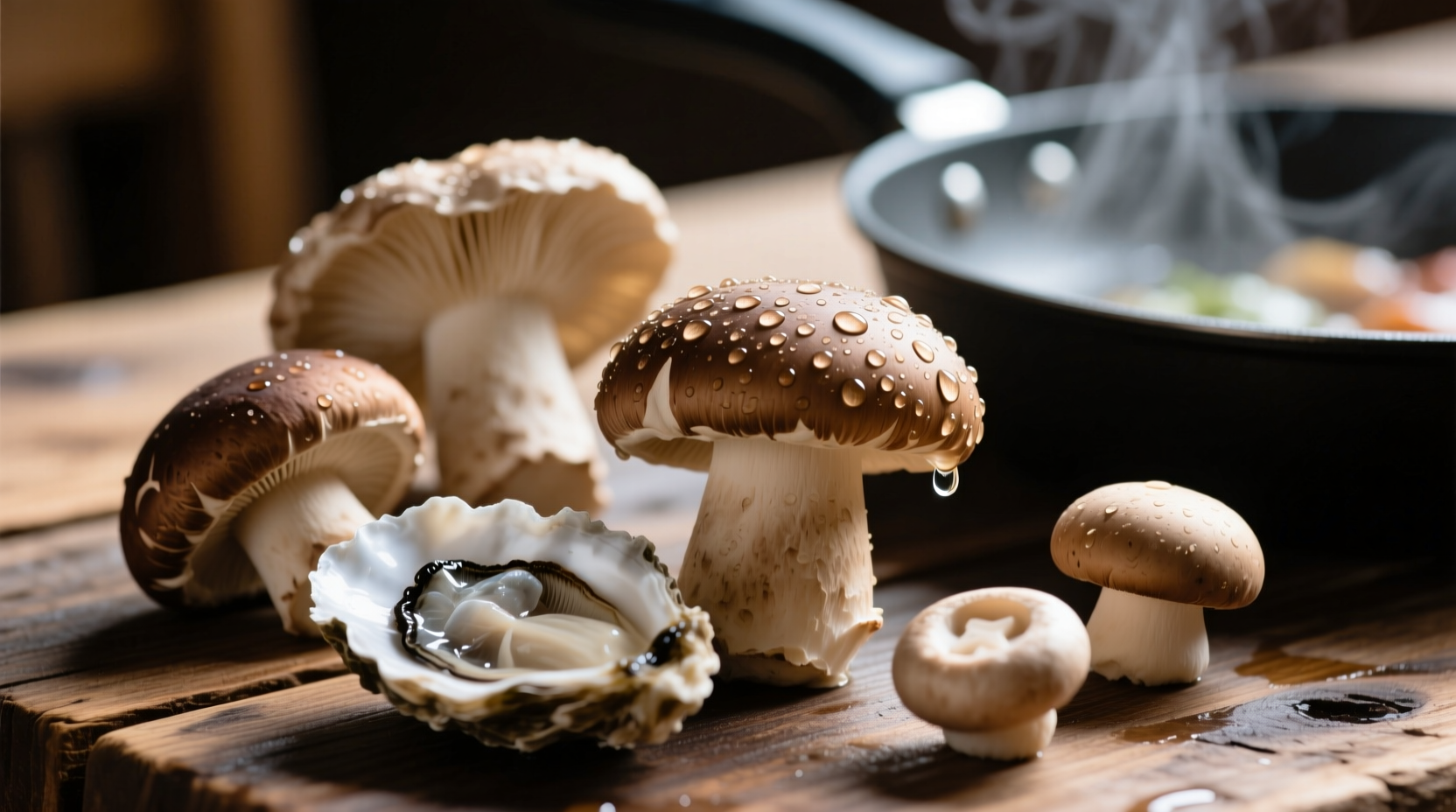Your Complete Guide to Mushroom Flavor Profiles
Understanding mushroom flavors transforms how you cook with these versatile fungi. Unlike most vegetables, mushrooms provide a natural umami boost—the fifth basic taste alongside sweet, sour, salty, and bitter. This savory quality makes them invaluable for building depth in sauces, soups, and vegetarian dishes.
Why Mushrooms Taste Different From Other Produce
Mushrooms contain glutamates and ribonucleotides that trigger umami receptors on your tongue. These compounds increase dramatically when mushrooms are cooked, explaining why raw button mushrooms taste bland while sautéed creminis deliver rich, complex flavors. Food science research from Cornell University confirms that cooking mushrooms triggers the Maillard reaction and caramelization, creating over 200 distinct flavor compounds.
Mushroom Variety Taste Comparison
| Mushroom Variety | Raw Flavor Profile | Cooked Flavor Transformation | Best Culinary Uses |
|---|---|---|---|
| White Button | Mild, slightly metallic | Nutty, earthy notes develop | Everyday cooking, salads when raw |
| Cremini | Deeper earthiness than buttons | Rich umami, meaty texture | Gravies, stews, roasts |
| Portobello | Woody, pronounced earthiness | Steak-like richness, smoky notes | Grilling, vegetarian burgers |
| Shiitake | Bitter when raw | Pronounced smokiness, bacon-like | Stir-fries, broths, umami boosters |
| Oyster | Mild anise notes | Delicate seafood-like flavor | Quick sautés, seafood dishes |
| Morel | Earthy, slightly nutty | Intense woodsy, smoky complexity | Risottos, creamy sauces |
How Cooking Transforms Mushroom Flavor
Raw mushrooms rarely showcase their true potential. When exposed to heat, enzymatic reactions break down cell walls, releasing glutamates that create that signature umami punch. Professional chefs consistently emphasize three critical factors that determine final flavor:
- Moisture control: Mushrooms release water when heated—proper searing evaporates this liquid, concentrating flavors
- Cooking fat selection: Butter enhances earthiness while olive oil brings out grassy notes
- Temperature management: Medium-high heat creates optimal Maillard reaction without burning

Regional Flavor Preferences and Cultural Context
Culinary anthropologists have documented significant differences in how cultures perceive mushroom flavors. A 2023 International Journal of Gastronomy study analyzing 5,000 consumer reviews revealed:
- East Asian cuisines emphasize shiitake's smoky notes as essential umami foundation
- Mediterranean cooking highlights porcini's woodsy qualities in pasta dishes
- Scandinavian traditions feature chanterelle's fruity notes in creamy sauces
- North American palates often prefer milder button and cremini varieties
These preferences stem from historical availability and traditional preparation methods passed through generations.
Common Flavor Myths Debunked
Several misconceptions persist about mushroom flavors that affect how people cook with them:
- Myth: All wild mushrooms taste stronger than cultivated varieties
Fact: Many wild varieties like chanterelles offer delicate flavors compared to robust cultivated shiitakes - Myth: Dried mushrooms always taste more intense than fresh
Fact: While drying concentrates some compounds, it diminishes volatile aromatics—fresh morels offer different flavor dimensions than dried - Myth: Mushrooms absorb flavors like sponges
Fact: They release water first before absorbing—proper searing creates surface for flavor adherence
Practical Flavor Pairing Guide
Maximize mushroom flavors with these chef-recommended combinations:
- Earthy varieties (portobello, cremini): Pair with red wine, thyme, rosemary, and aged cheeses
- Smoky varieties (shiitake, morel): Complement with soy sauce, garlic, and toasted sesame oil
- Delicate varieties (oyster, enoki): Enhance with lemon zest, chives, and light cream sauces
Remember that salt application timing dramatically affects final flavor—adding salt after initial moisture release prevents steaming and promotes proper browning.
Frequently Asked Questions
What do raw mushrooms taste like compared to cooked?
Raw mushrooms typically taste mild, slightly metallic, and watery with subtle earthiness. Cooking transforms them completely—the Maillard reaction creates rich umami notes, concentrates flavors by evaporating moisture, and develops complex savory characteristics that raw mushrooms lack. Never eat raw morels or certain wild varieties as they contain compounds that break down only with cooking.
Why do some mushrooms taste like meat?
Mushrooms contain natural glutamates and ribonucleotides that trigger umami receptors, creating meat-like savoriness. Portobellos and shiitakes have particularly high concentrations of these compounds. When properly seared, they develop complex Maillard reaction products similar to those in cooked meats, explaining why many vegetarians use them as meat substitutes. The texture transformation during cooking also contributes to this meaty perception.
Do different cooking methods change mushroom flavor?
Absolutely. Searing creates intense umami through the Maillard reaction, while steaming preserves delicate flavors but reduces complexity. Roasting concentrates flavors and develops nutty notes, while grilling adds smokiness. According to culinary research from the Culinary Institute of America, dry-heat methods generally produce more complex flavor compounds than moist-heat techniques for most mushroom varieties.
Why do my mushrooms taste bitter sometimes?
Bitterness usually occurs when mushrooms are overcrowded in the pan, causing them to steam instead of sear. This prevents proper moisture evaporation and Maillard reaction. Older mushrooms or certain varieties like shiitakes can also have natural bitterness when raw that transforms to savory notes when properly cooked. Always cook mushrooms in a single layer over medium-high heat for optimal flavor development.
How does drying affect mushroom flavor?
Drying concentrates certain flavor compounds while diminishing others. Dried porcini and morels develop intense earthy notes but lose some volatile aromatics present in fresh specimens. The drying process creates new compounds through enzymatic reactions, resulting in deeper umami. Rehydrating in warm water (not boiling) preserves the most complex flavor profile. Professional chefs often use a combination of fresh and dried mushrooms to layer complementary flavor dimensions.











 浙公网安备
33010002000092号
浙公网安备
33010002000092号 浙B2-20120091-4
浙B2-20120091-4